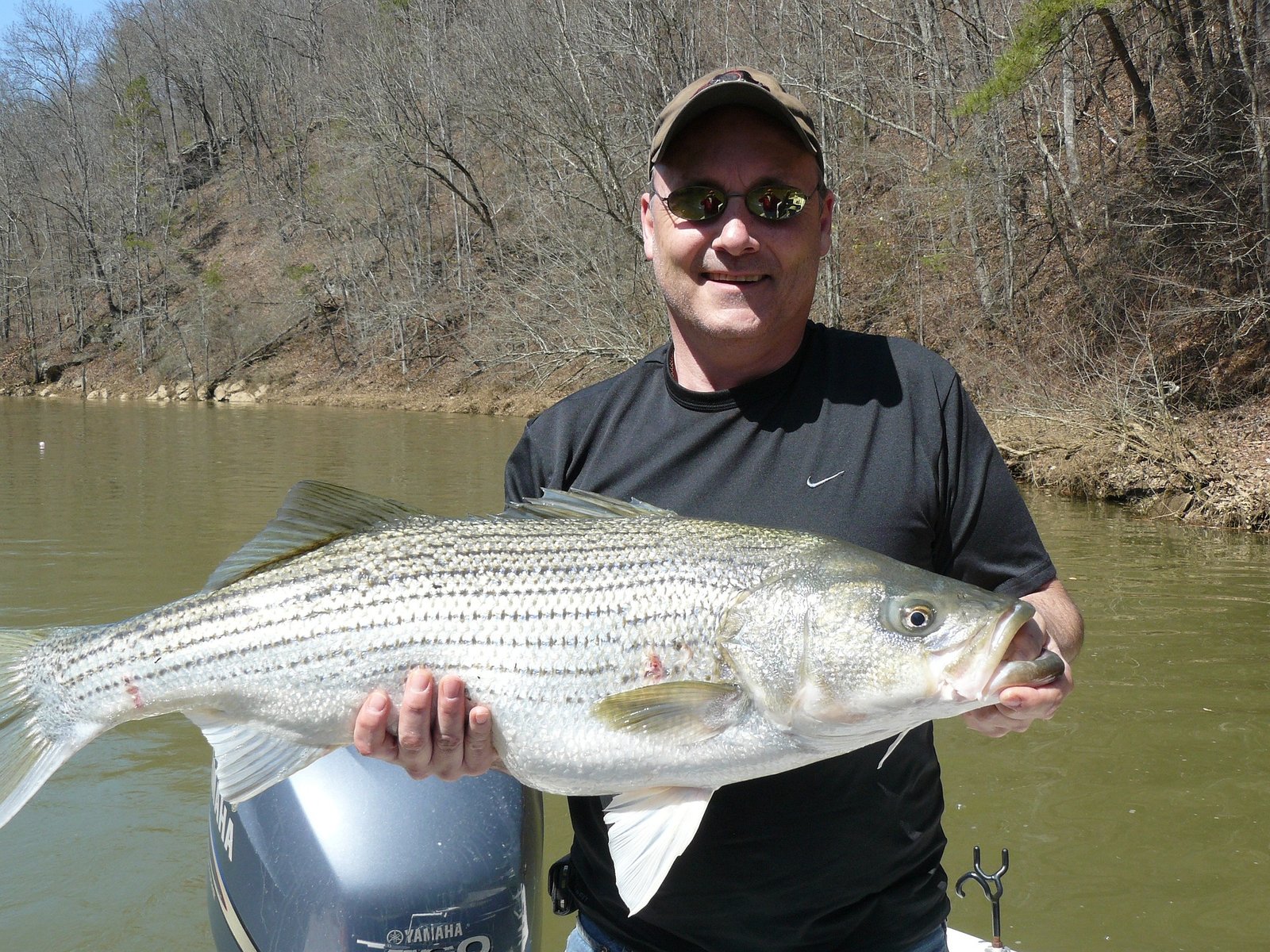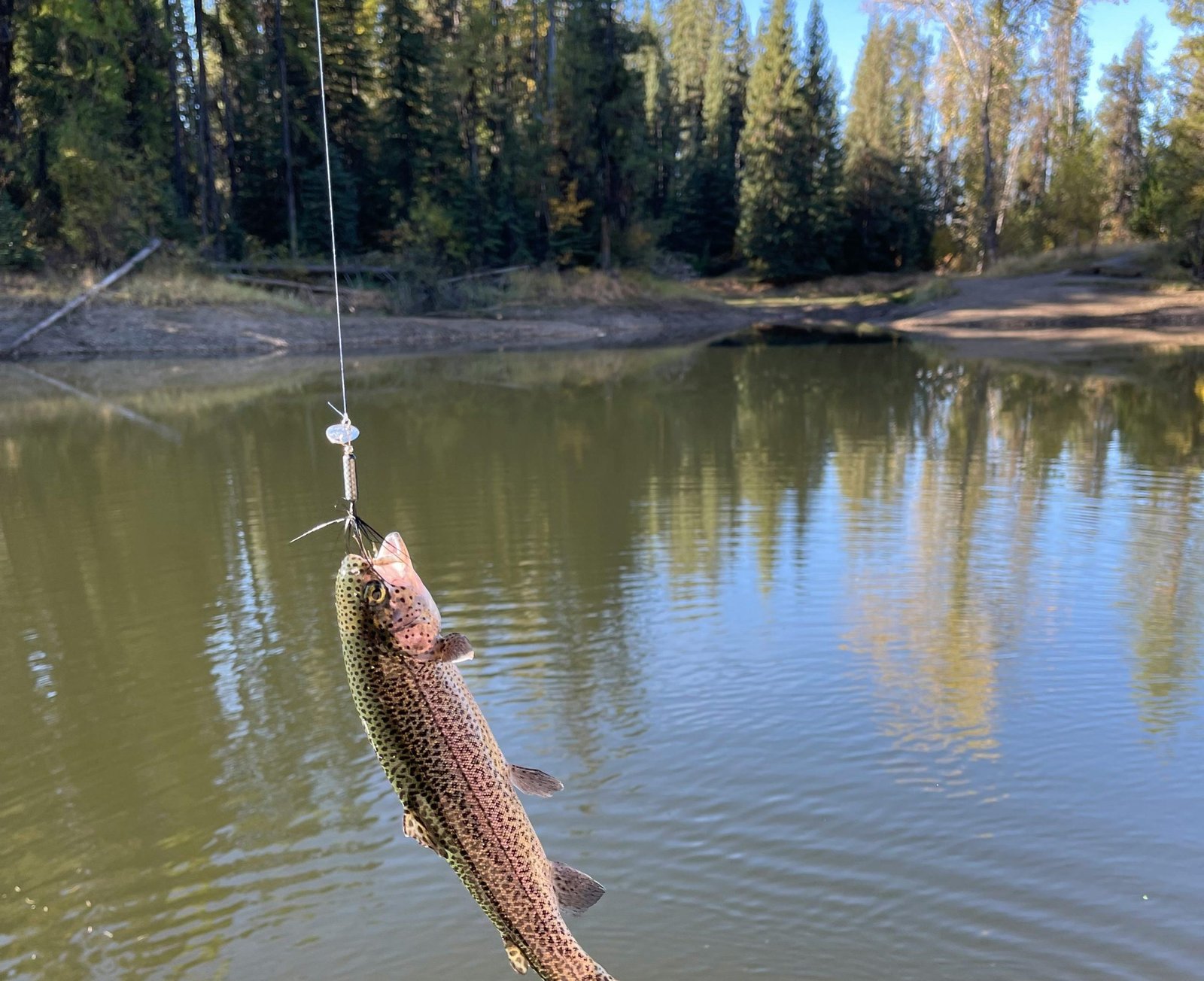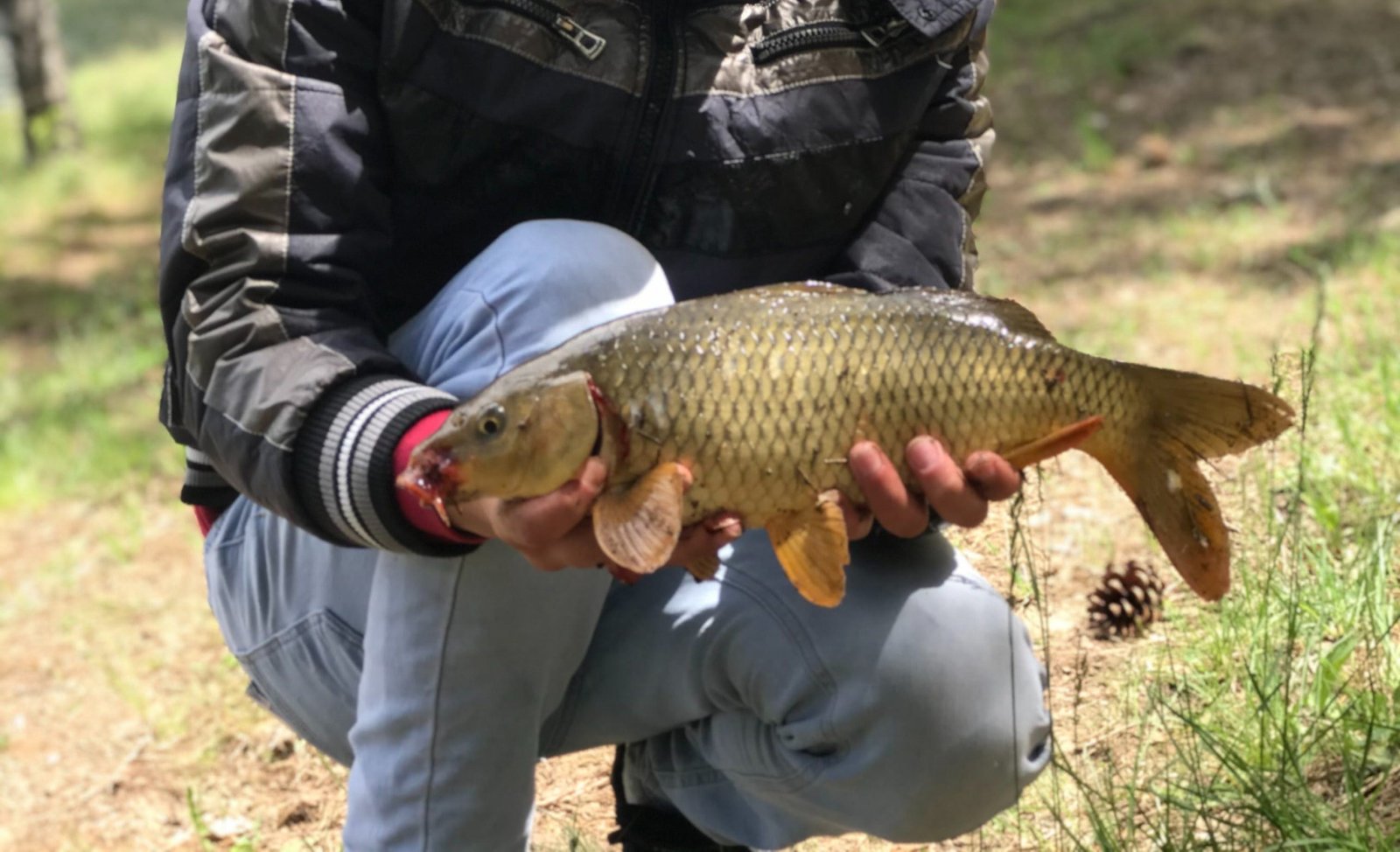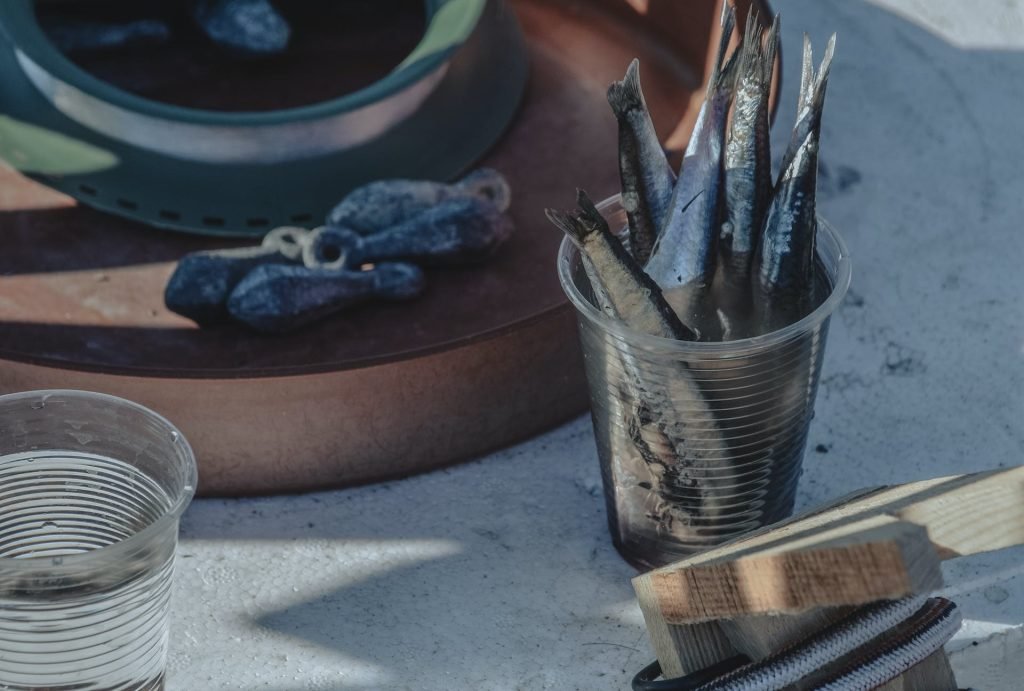
There are multiple baits that work well while surf fishing. If you’ve been fishing on beaches for a while, you probably know the most popular baits. But if you’re on a vacation and wondering what to get from the bait store, keep reading to discover the best baits for surf fishing.
One the best baits for surf fishing is live shrimp. Many fish species that inhabit the surf, such as pompano, bluefish, and striped bass, feed on shrimp as a large part of their diet. Fresh, live, or frozen shrimp can all work well as bait. Another great thing about shrimp is that they are readily available at most bait and tackle shops.
Another effective bait for surf fishing is sand crabs. These small crustaceans are abundant in the surf zone and are a favorite food of many fish species, including perch, croaker, and corbina. You can catch sand crabs with a sand crab rake or by digging them up with a shovel. Once you have your bait, simply hook it through the back or the legs and cast it out into the surf.
1. Bloodworms
Bloodworms are a favored bait for many species of fish due to their scent and natural appearance in the water.
To hook a bloodworm, first, take a small hook, and thread the worm onto the hook starting at one end.
Pierce the worm’s body in segments, wrapping it around the shank of the hook until you reach the other end. Ensure that the hook’s point is exposed for a better hookset.
2. Shrimp
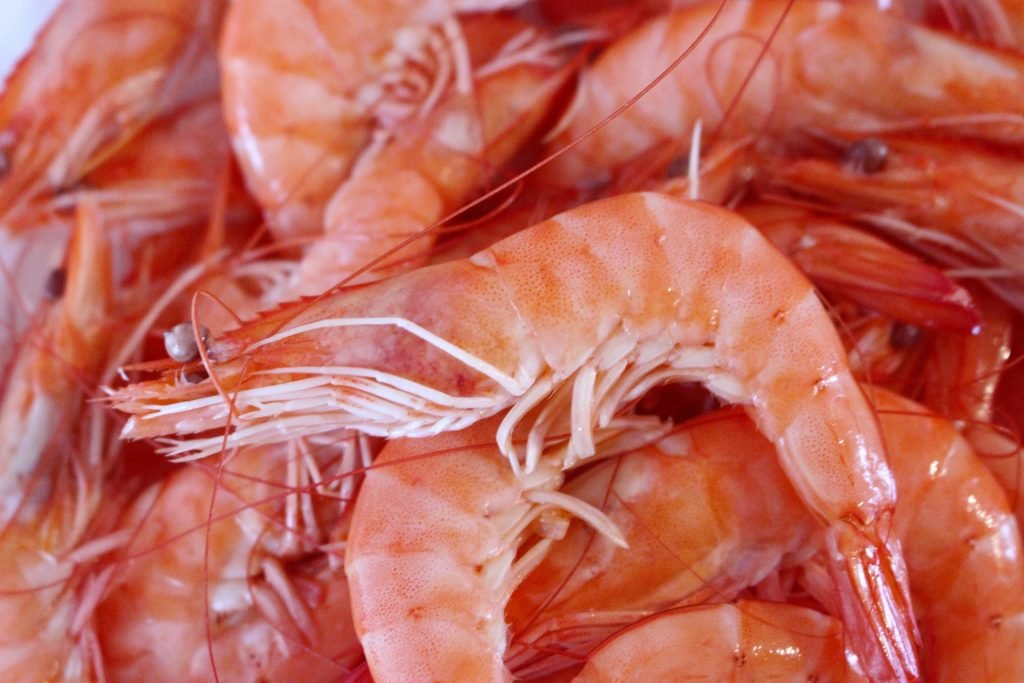
Shrimp can be used whole or in pieces, depending on the size of the fish you’re targeting.
For whole shrimp, remove the head and the tail, and insert the hook from underneath, piercing through the shrimp’s body and exiting near the top without breaking the shell on the back as it helps to keep the shrimp on the hook.
For a piece of shrimp, simply thread it onto the hook, making sure the point and barb are exposed.
3. Clams
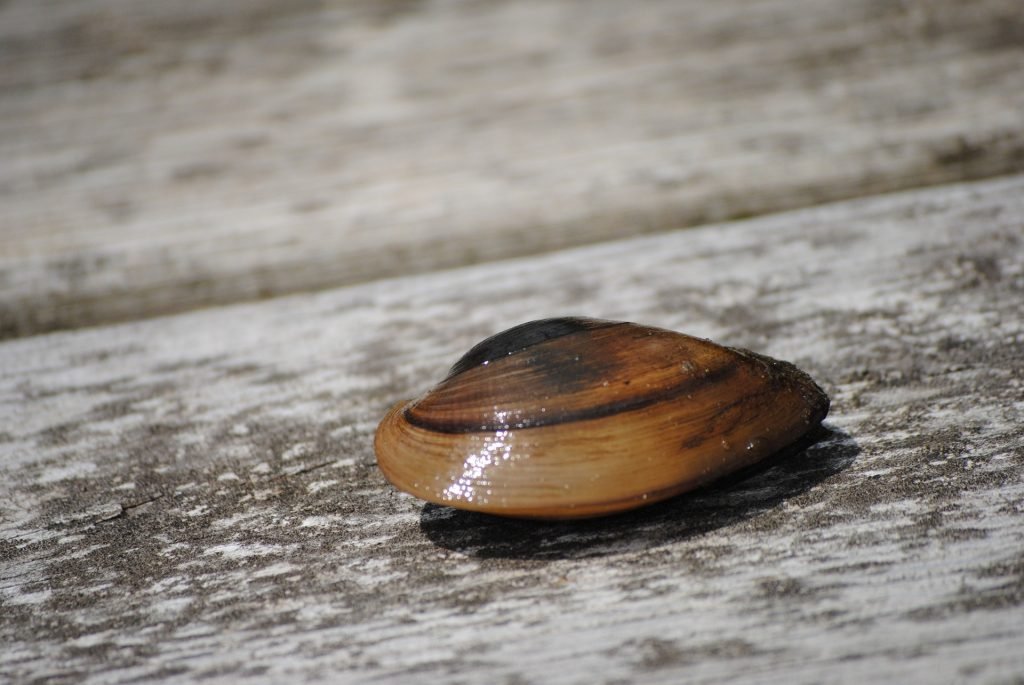
Clams are soft and can be tricky to keep on the hook.
To bait a clam, open the shell and cut or scoop out the clam’s soft body. Using a bait-holder hook with barbs on the shank can be helpful.
Thread the clam onto the hook, passing the hook through the meat multiple times and wrapping it around the hook if necessary.
Some anglers use thread or elastic bait bands to help keep the clam in place.
4. Squid
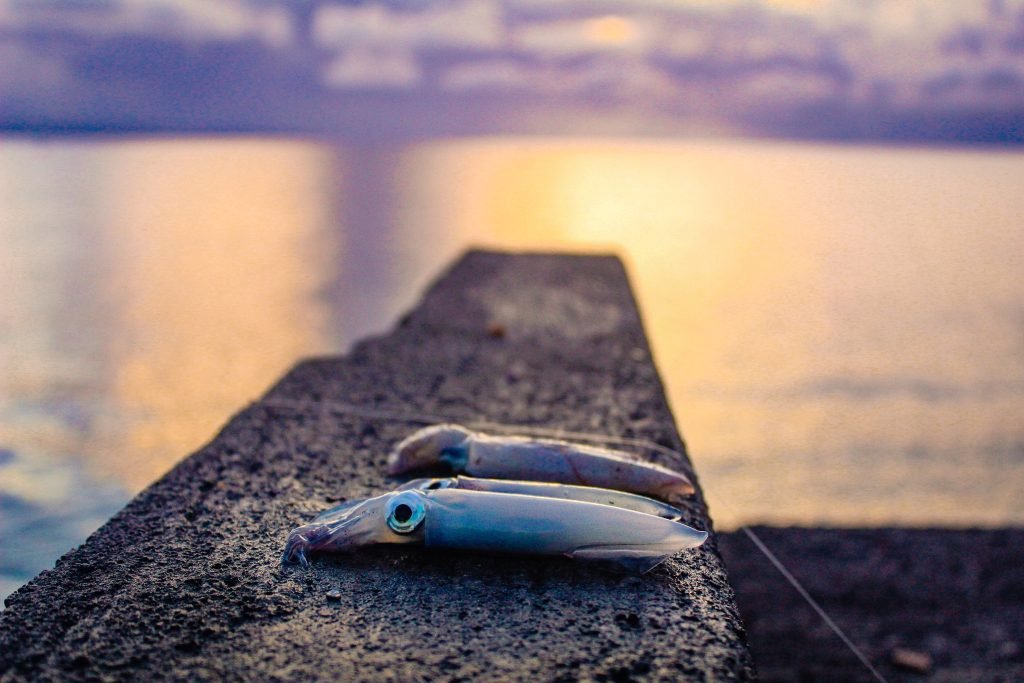
Squid can be cut into strips or used whole, depending on the target species.
To hook a strip of squid, thread the strip onto the hook, starting at one end and piercing it several times along its length.
Leave the end of the strip free to flutter in the current. When using a whole squid, insert the hook through the mantle, and if it’s a larger squid, you can also cut slits into the mantle to create more movement in the water.
You should also use elastic bait bands for making sure it stays on the hook.
5. Sand Crabs
Also known as mole crabs, sand crabs are effective bait for surf fishing.
To hook a sand crab, gently insert the hook through the underside, avoiding the hard shell, and out through the top shell.
Try to keep the crab alive, as the natural movements will attract fish.
If you’re buying crab at bait stores, keep in mind that it can get quite expensive. Make sure to hook it properly so you don’t lose it in the waves.
6. Baitfish
Using live or dead baitfish is a common technique for catching larger predatory fish.
You can use oily fish like mackerel and smaller fish like anchovies and herring.
For live baitfish, hook the fish either through the lips, nostrils, or near the dorsal fin to allow natural movement.
For dead baitfish, you can hook it through the eye sockets or through the back, ensuring the hook is set securely without tearing the flesh excessively.
When using a whole dead baitfish, make sure the hook is exposed for a better hookset.
If you’re using a cut piece of baitfish, thread it onto the hook in a similar way to the squid, making sure the hook point is not obscured by the bait to increase your chances of a successful catch.
7. Sand Fleas

Sand fleas are small crustaceans found along sandy beaches where waves break. Don’t confuse them with the parasitic insects that affect pets.
To hook a sand flea, gently insert the hook into its underside, which is softer and less likely to crack than the top shell. Push the hook upward, taking care not to emerge through the top shell if you want to keep the sand flea alive. The goal is to penetrate just enough to secure the sand flea without damaging its vital organs or killing it.
The hook should be placed toward the rear of the sand flea’s body. This position allows the sand flea to maintain its natural behavior and movement, making it more attractive to fish.
Surf Fishing Basics

In this section, I will cover two important aspects of surf fishing: tides and water conditions, and surf fishing gear essentials.
Tides and Water Conditions
One of the most critical factors in surf fishing is the tide. The tide is the movement of water in and out of an area, and it affects the behavior of fish. During high tide, fish move closer to shore to feed on baitfish that are pushed in by the waves. During low tide, fish move further out to deeper water to avoid predators. Therefore, it is essential to check the tide charts before heading out to fish.
Water conditions also play a crucial role in surf fishing. The color, temperature, and clarity of the water can affect the behavior of fish. For example, murky water can make it harder for fish to see your bait, while clear water allows fish to see your bait more easily. The water temperature can also affect the type of fish you catch. Some fish prefer warmer water, while others prefer colder water.
Surf Fishing Gear Essentials
Here are some essential items to include in your gear:
- Rod and reel: Choose a medium-heavy power rating with a moderate action for an all-around rod that can handle heavy sinkers and fish over 3ft in length.
- Line: Braid is the preferred line type for surf fishing, as it is strong and has low stretch.
- Sinkers: Use sinkers to keep your bait in place in the surf. The size of the sinker will depend on the strength of the current.
- Hooks: Use hooks that are appropriate for the size of the bait you are using. Circle hooks are popular for surf fishing, as they are less likely to gut-hook fish (not a problem if you keep the fish).
- Bait: The best bait for surf fishing depends on the type of fish you are targeting. Live bait, fresh cut bait, frozen bait, and artificial bait are all options.
In addition to having the right gear, using the right techniques can also increase your chances of success. For example, casting your bait into troughs (the areas between breaking waves) can be effective, as fish often swim in these areas to feed. It is also essential to be patient and persistent, as surf fishing can require a lot of waiting and experimentation.
Optimizing Bait Presentation
Presentation is key. This involves understanding the movement and attraction of the bait, as well as matching the hatch to the local fish population.
Matching the Hatch
Matching the hatch is a crucial aspect of bait presentation. This involves using bait that mimics the local baitfish in size, shape, and color. By doing so, you can attract the attention of the local predator fish.
Wouldn’t recommend using crabs, for example, if they’re not native to the place you’re fishing in. They could work, but native bait will work better.
When it comes to surf fishing, some of the best baits to use are sand fleas, shrimp, and small baitfish. These natural baits exhibit realistic movements and scents that attract a variety of predator fish. Rigging live bait on a suitable hook using methods like Carolina rigging or free-lining, depending on the conditions and target species, can be highly effective.
Movement and Attraction
Fish are attracted to movement, so it’s important to make sure that your bait is moving in a natural and realistic way. This can be achieved by using lures that mimic the movements of baitfish, or by using live bait that is rigged in a way that allows it to move freely in the water.
In addition to movement, attraction is also important. This can be achieved by using bait that has a strong scent or by adding attractants to your bait. For example, adding a scent like fish oil to your bait can help to attract fish and ultimately catch it.
Frequently Asked Questions

What types of lures are most effective for casting in surf conditions?
When it comes to surf fishing, lures can be a great alternative to live or cut bait. The most effective lures for casting in surf conditions are those that mimic the movement of the fish’s natural prey. Some popular options include bucktail jigs, soft plastic lures, and metal spoons. It’s important to choose a lure that matches the size and color of the fish’s natural prey in the area you are fishing.
Which live baits are known to attract the most fish while surf fishing?
Live bait is a popular choice for surf fishing because it can attract a wide variety of fish species. Some of the most effective live baits for surf fishing include sand crabs, bloodworms, shrimp, and clams. It’s important to use fresh, lively bait and to rig it properly to increase your chances of a successful catch.
Are Fishbites considered a good alternative to traditional baits for surf fishing?
Fishbites are a popular alternative to traditional baits for surf fishing. They are made of a synthetic material that mimics the scent and texture of natural bait. They are easy to use and can be effective for catching a variety of fish species. However, some anglers find that they are not as effective as natural bait, especially in areas with heavy fishing pressure.
What are the preferred baits for targeting specific species in surf fishing across various states?
The preferred baits for targeting specific species in surf fishing can vary depending on the location and time of year. In general, sand crabs are a popular bait for catching surfperch, while bloodworms are effective for catching striped bass and bluefish. Shrimp and cut bait can be effective for catching a variety of species, including pompano, redfish, and flounder. It’s important to research the specific species you are targeting and the preferred baits for that species in your area.
How does one choose the best rig setup for successful surf fishing?
Choosing the best rig setup for surf fishing can depend on a variety of factors, including the species you are targeting, the surf conditions, and your personal preference. Some popular rig setups for surf fishing include the fish finder rig, the Carolina rig, and the pompano rig. It’s important to choose a rig that matches your bait and the conditions you are fishing in.
Can you use cut bait for surf fishing, and what are its advantages?
Cut bait can be a great option for surf fishing, especially when targeting larger species like sharks and rays. It’s important to use fresh, oily bait like mackerel or squid and to rig it properly to increase your chances of a successful catch. Some advantages of using cut bait include its durability on the hook and the strong scent it can emit to attract fish.


